occupational segregation
description: distribution of workers across and within occupations
20 results
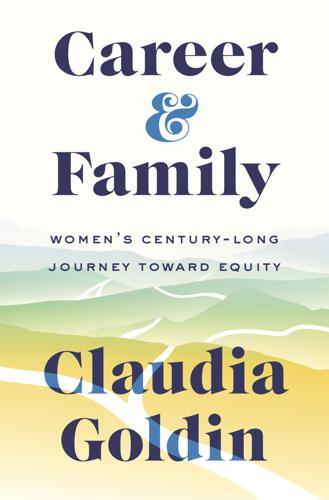
Career and Family: Women’s Century-Long Journey Toward Equity
by
Claudia Goldin
Published 11 Oct 2021
Are women actually receiving lower pay for equal work? By and large, not so much anymore. Pay discrimination in terms of unequal earnings for the same work accounts for a small fraction of the total earnings gap. Today, the problem is different. Some attribute the gender earnings gap to “occupational segregation”—the idea that women and men are self-selecting, or being railroaded into, certain professions that are stereotypically gendered (such as nurse versus doctor, teacher versus professor), and that those chosen professions pay differently. The data tell a somewhat different story. For the nearly five hundred occupations listed in the US census, two-thirds of the gender-based difference in earnings comes from factors within each occupation.
…
College-graduate women are more often in professions such as teacher, nurse, and accountant, whereas college-graduate men are more often in occupations such as manager, civil engineer, and sales representative. Women are also in lower-paying firms, even if they have the same occupational title as men. The phenomenon is generally termed “occupational segregation,” making it sound like legal barriers and firm policies exist that deliberately segregate—such as the marriage bars that we saw with Groups Two and Three. As we’ve seen, at one point in our history many firms had strict policies that limited the occupations women and men could enter, although it did not follow that women were restricted to only lowly jobs and men were barred from them.
…
That’s a lot of people to move around and all the more challenging given the different skills and preferences of the workers. But let’s wave an empirical thought-experiment wand to see what might happen if we tried. Even if one could accomplish the daunting task of rejiggering occupations to create equality, only around one-third of all gender earnings inequality would be eliminated. Occupational segregation isn’t the main issue. It isn’t even half of it, although many have claimed that it is the main offender. The reason that one can’t eliminate more of the gender earnings gap is because it exists within just about every occupation. Furthermore, earnings gaps within occupations are larger for the more highly educated
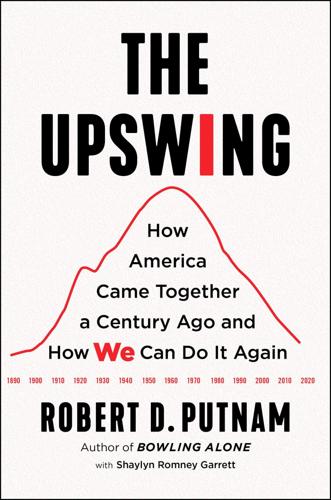
The Upswing: How America Came Together a Century Ago and How We Can Do It Again
by
Robert D. Putnam
Published 12 Oct 2020
Women today are about twice as likely to report experiencing such discrimination in the workplace as men, 38 and economists often note a certain percentage of the gender pay gap that is “unexplained” by all other factors. But by far the biggest reason for the narrowing but still significant gender pay gap has been the persistent reality of occupational segregation. Occupational segregation is tracked using a measure called the Index of Dissimilarity, which calculates how equally distributed between men and women is employment in a given job category. If women make up 47 percent of the total workforce, as they do today, then zero occupational segregation (or a zero on the Index of Dissimilarity) would mean that, on average, in every single job category (from nursing, to engineering, to retail, to financial planning) 47 percent of the employees are women and 53 percent of the employees are men.
…
But the long-term trend shows very little change until 1960, with slow improvement thereafter, and marked improvement only after 1970.39 This trend is another case in which the 1960s feminist revolution seems to have had an important effect, by finally opening up many job categories long closed to women.40 And yet, still today, nearly 50 percent of all workers would have to reshuffle occupational categories in order to achieve gender parity by profession.41 This fact has important implications for pay disparities, because in general, male-dominated job categories are compensated more highly than female-dominated job categories. Thus, a major reason why women earn less than men is that they are concentrated in jobs that, in general, pay less.42 FIGURE 7.8: OCCUPATIONAL SEGREGATION, 1900–2017 Source: US Census; IPUMS; American Community Survey. See endnote 7.39. How did occupational segregation come to be such an enduring feature of the American economy? Burgeoning American industries in the late nineteenth century (such as iron and steel, lumber, mining, and machinery) created very little demand for female labor, leaving women who sought work outside the home to factory jobs producing textiles, apparel, and canned goods—typically in positions with no qualifications for entry, no opportunity for advancement, and payment by the piece.43 However, at the turn of the twentieth century, corporations began to compound in size, retail stores became considerably larger, and sectors such as communications and public utilities expanded dramatically.
…
Sources for Figure 7.8: Matthew Sobek, Historical Statistics of the United States, Earliest Times to the Present: Millennial Edition, Table Ba4207-4213; US Census (1950–2000; Steven Ruggles, Katie Genadek, Ronald Goeken, Josiah Grover, and Matthew Sobek, Integrated Public Use Microdata Series: Version 7.0 [dataset] (Minneapolis: University of Minnesota, 2017); American Community Survey (2001–2016); Ruggles et al. (2017) as calculated by Kim A. Weeden. 40 Research suggests that most of the change in occupational segregation since the 1970s is in fact due to the movement of women into formerly male-dominated jobs. See Blau and Winkler, The Economics of Women, Men, and Work, 168. 41 For a more technical explanation of how occupational segregation is calculated, see ibid., 165. 42 Ibid., 159. 43 Woloch, Women and the American Experience, 240. 44 Goldin, “The Rising (and Then Declining) Significance of Gender,” 10–11. 45 Ibid., 20–22. 46 James T.

The New Urban Crisis: How Our Cities Are Increasing Inequality, Deepening Segregation, and Failing the Middle Class?and What We Can Do About It
by
Richard Florida
Published 9 May 2016
In all these places, members of the creative class, working class, and service class are least likely to be scattered evenly across the metro area and most likely to live alongside others of the same class. This pattern of overall occupational segregation is shaped by the location of the creative class—the most advantaged of the three groups. The reason is simple: members of the creative class have more money and therefore the greatest ability to choose where to live. They are choosing the most desirable places, pushing the members of the two less advantaged classes into the spaces that are left over. The precise dynamics of income, educational, and occupational segregation vary, but they are closely associated with each other statistically, and when they are measured together, a clear picture of the overall geography of economic segregation across America emerges.17 This pattern is captured in two broad indexes my team and I developed—one measuring overall economic segregation, the other combining this measure with measures of wage and income inequality.
…
Educational Segregation: Combines the measures of segregation of college graduates and segregation of the less educated (those who did not complete high school) into an index of overall educational segregation. Occupational Segregation: Combines the measures of creative-class segregation, working-class segregation, and service-class segregation into an index of overall occupational segregation. Overall Economic Segregation Index: Combines the seven specific economic segregation indexes, equally weighted, into a single composite index of overall economic segregation. Other Composite Indexes There are two broader composite indexes.
…
We also developed several composite indexes to track economic segregation overall and the combination of economic segregation and inequality together.6 As we will see, while different types of metros suffer in different ways from the various kinds of economic segregation, our overarching analysis reveals a more basic underlying pattern. Across each of these categories of income, education, and occupational segregation, as well as in our composite index, which takes into account their overall and combined effects, economic segregation is greater in bigger, denser metros with large concentrations of high-tech industries, college graduates, and members of the creative class. And, as we will also see, our deepening economic segregation is driven by the clustering together of more advantaged groups, especially the wealthy, who have the resources to isolate and wall themselves off in their own communities.
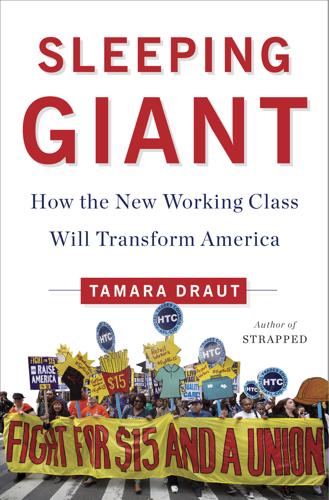
Sleeping Giant: How the New Working Class Will Transform America
by
Tamara Draut
Published 4 Apr 2016
Ariane Hegewisch and Stephanie Keller, “The Gender Wage Gap by Occupation 2013 and by Race and Ethnicity,” Institute for Women’s Policy Research, Washington, D.C., April 2014, at http://www.iwpr.org/publications/pubs/the-gender-wage-gap-by-occupation-and-by-race-and-ethnicity-2013. 22. Ariane Hegewisch and Heidi Hartmann, “Occupation Segregation and the Gender Wage Gap: A Job Half Done,” Institute for Women’s Policy Research, Washington, D.C., January 2014, at http://www.iwpr.org/publications/pubs/occupational-segregation-and-the-gender-wage-gap-a-job-half-done. 23. Algernon Austin, William Darity Jr., and Darrick Hamilton, “Whiter Jobs, Higher Wages: Occupational Segregation and Lower Wages of Black Men,” Economic Policy Institute, Washington, D.C., February 28, 2011, at http://s1.epi.org/files/page/-/BriefingPaper288.pdf. 24.
…
Similarly, agencies that were set up to help Japanese Americans find work upon their release from internment camps after World War II also directed women to domestic jobs.23 Throughout the first half of the twentieth century, it was not uncommon for white middle-class families to employ a woman of color to help clean the house, prepare meals, and care for children or elders. The legacy of this occupational segregation remains today: The majority of these caring jobs are still done by women of color, with a disproportionate share held by black women. Black women make up a full one-third of nursing assistants and home health aides and one-fifth of personal care aides (compared to about 6.5 percent of the population).
…
A Better Deal for Society • Revitalize our nation’s infrastructure, including addressing climate change, to ensure full employment. • Establish a National Truth and Reconciliation Commission on Racial Healing to provide full accounting of our nation’s violent racial history and to address its legacy in residential segregation, occupational segregation, the racial wealth gap, and oppressive criminal justice and policing policies. • Develop comprehensive immigration reform to provide a pathway to citizenship for undocumented immigrants. A Better Deal for Democracy • Reform election procedures and practices, including establishing automatic voter registration to ensure all citizens are registered, and widespread adoption of same-day registration, early voting, and restoration of voting rights to formerly incarcerated citizens; restore the Voting Rights Act to provide voter protections for African Americans
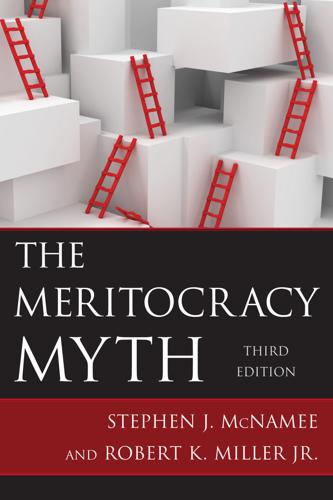
The Meritocracy Myth
by
Stephen J. McNamee
Published 17 Jul 2013
Although the level of female participation in the labor force is now almost equivalent to that of men, women are not equally spread out within the labor force. In particular, women are highly concentrated in the mostly low-wage service sector of the economy. While there has been a steady decline in occupational segregation, there is still a substantial amount of sex-based occupational segregation in the labor force (Stainback and Tomaskovic-Devey 2012). For instance, in 2010, women comprised 96 percent of secretaries and administrative assistants, 97 percent of preschool and kindergarten teachers, 91 percent of registered nurses, 95 percent of dental hygienists, 95 percent of child-care workers, 93 percent of receptionists and information clerks, and 91 percent of booking, accounting, and auditing clerks, just to name a few (U.S.
…
In addition, much of the recent wage-gap reduction is due to the falling wages of men rather than increasing wages of women. Also, most of the gains relative to male incomes have been experienced by upper-class women, whereas incomes for lower-class women have remained stagnant (Massey 2007, 240; Mishel, Bivens, Gould, and Shierholz 2012, 236). Differences in the occupational distributions of men and women—occupational segregation of women into “women’s jobs,” which are lower paying and low-wage industries—explains the largest portion of the aggregate male-female wage gap (Blau and Kahn 2006; Blau 2012). Other factors include interrupted careers due to marriage and childbearing, lower rates of unionization for women, differences in hours worked, and interactions of race and gender.
…
W., 1 , 2 Bush, George W., 1.1-1.2 , 2 , 3 C Calvinism, 1 , 2 capitalism as a continuum, 1 entrepreneurial capitalists, 1 , 2 , 3 free-market expression, 1 , 2 hard work and self-denial as aspects of, 1 human capital, 1 risk, 1 , 2 , 3 turn-of-the-century capitalists, 1 , 2 venture capitalists, 1 wealth inequality in capitalist societies, 1 Carnegie, Andrew, 1 , 2 Catholics and Catholicism, 1 , 2 , 3 , 4.1-4.2 , 5 Chambliss, William, 1 charitable giving, 1 , 2 , 3 , 4 , 5.1-5.2 children American Dreams for, 1 , 2.1-2.2 cost of raising, 1 cultural capital and, 1 , 2.1-2.2 , 3.1-3.2 , 4 , 5 , 6 , 7 , 8 in culture-of-poverty theory, 1.1-1.2 discrimination and, 1 , 2.1-2.2 , 3 , 4 , 5 downward mobility, insulation from, 1.1-1.2 education and parental influence, 1.1-1.2 , 2 , 3 , 4 , 5.1-5.2 , 6 , 7 , 8 health issues, 1 , 2 as heirs, 1 , 2.1-2.2 , 3.1-3.2 , 4.1-4.2 , 5 , 6 , 7.1-7.2 , 8 , 9 , 10 , 11 of immigrants, 1 numbers, declining, 1.1-1.2 , 2 , 3.1-3.2 , 4 parental occupation, effects on, 1 of the privileged, 1 , 2 , 3 , 4 , 5 , 6 , 7 proposed reforms benefiting, 1 , 2.1-2.2 in a pure meritocratic system, 1 social class, education affected by, 1 social mobility and, 1 , 2 Clinton, Hillary, 1 , 2 cognitive elite, 1 , 2 Coleman, James S., 1 , 2 college American dream, as part of, 1 , 2 aptitude tests, 1 , 2 cognitive elect sorted out by, 1 credentialism, 1.1-1.2 , 2.1-2.2 employment during attendance, 1 enrollment, 1.1-1.2 , 2 funding accounts, 1 hiring practices, 1.1-1.2 income, effects on completion, 1.1-1.2 job prospects, 1.1-1.2 legacy admissions, 1.1-1.2 , 2 student debt, 1 , 2.1-2.2 tracking, effects of, 1.1-1.2 types of colleges and social standing, 1.1-1.2 , 2 the wealthy and, 1 , 2 , 3 Collins, Randall, 1 , 2 , 3 Coming Apart: The State of White America, 1960–2010 (Murray), 1.1-1.2 competition capitalism and, 1 , 2 destructive vs. constructive forms, 1.1-1.2 discrimination reducing, 1 , 2 , 3 at elite colleges, 1 , 2 foot race metaphor, 1 foreign business competition, 1.1-1.2 large corporations discouraging, 1 , 2 , 3 , 4 , 5 reforms enhancing, 1 , 2 women and, 1 , 2 , 3 , 4 T The Competition Paradigm (Rosenau), 1.1-1.2 C conflict theory of inequality, 1.1-1.2 , 2 corporations, large American economy, dominating, 1 , 2 ascent of, 1.1-1.2 competition, discouraging, 1 , 2 , 3 , 4 , 5 highly concentrated industries, 1 , 2 , 3 labor unions and, 1 , 2 megamergers, 1.1-1.2 , 2 reform suggestions, 1 restructuring, 1.1-1.2 , 2 self-employment affected by, 1 , 2 , 3 small businesses, vs., 1.1-1.2 , 2.1-2.2 , 3 Countrywide financial corporation, 1 , 2 Creating a Class: College Admissions and the Education of Elites (Stevens), 1 credentials credential underemployment, 1 cultural credentials, 1 , 2 , 3 , 4 , 5 , 6 importance of, 1.1-1.2 , 2 , 3 inflation of, 1 , 2.1-2.2 , 3 nonvalidated, 1 opportunities to earn, 1 cultural capital acquisition of, 1.1-1.2 defined, 1 , 2 , 3 discrimination and, 1 , 2 educational inequalities, 1 , 2 , 3.1-3.2 , 4 , 5 , 6 , 7 elite circles, acceptance into, 1 employers impressed with, 1.1-1.2 government programs leveling field, 1 information access, 1 inheritance and, 1 , 2 media portrayals, 1 nouveau riche, 1 right attitude, 1 social climbing, 1.1-1.2 , 2 transmission settings, 1.1-1.2 U.S. presidents, exemplifying, 1.1-1.2 culture-of-poverty theory, 1.1-1.2 , 2 D debt as a coping strategy, 1.1-1.2 Great Recession, during, 1 , 2 , 3 housing/mortgage debt, 1 , 2 as a liability, 1 student loans, 1 , 2.1-2.2 democracy, 1 , 2.1-2.2 , 3.1-3.2 , 4 , 5 , 6 , 7 , 8.1-8.2 Democracy in America (de Tocqueville), 1.1-1.2 disabled Americans, 1.1-1.2 , 2 , 3 discrimination affirmative action as a remedy, 1.1-1.2 ageism, 1.1-1.2 , 2 American Dream, affecting, 1.1-1.2 , 2 , 3.1-3.2 , 4 , 5 , 6 , 7 , 8.1-8.2 , 9.1-9.2 , 10.1-10.2 , 11 continuing effects of, 1.1-1.2 , 2 the disabled, experiences of, 1.1-1.2 , 2 , 3 in education, 1 , 2.1-2.2 , 3.1-3.2 , 4.1-4.2 , 5 , 6 expansion of opportunity and, 1 heterosexist prejudices, 1.1-1.2 , 2 , 3 in-group solidarity, 1.1-1.2 institutional favoritism, 1.1-1.2 , 2 , 3.1-3.2 legal and political injustice, 1.1-1.2 , 2 , 3.1-3.2 occupational unfairness, 1 , 2 , 3.1-3.2 , 4 , 5 , 6 , 7 , 8 the physically attractive as favored, 1.1-1.2 racial bigotry, 1 , 2.1-2.2 , 3.1-3.2 , 4 , 5.1-5.2 , 6 , 7 , 8 reform movements combating, 1.1-1.2 , 2 religious intolerance, 1.1-1.2 , 2 , 3 , 4 residential inequity, 1.1-1.2 , 2 women, experiences of, 1 , 2 , 3 , 4 , 5.1-5.2 , 6.1-6.2 , 7.1-7.2 , 8.1-8.2 , 9.1-9.2 Domhoff, William, 1 , 2 Duncan, Otis Dudley, 1 E education affirmative action and, 1 , 2 African Americans, educational issues of, 1.1-1.2 , 2.1-2.2 , 3 American Dream, as part of, 1 , 2.1-2.2 , 3 , 4 , 5 , 6 cognitive elite and educational attainment, 1 credentials, importance of, 1.1-1.2 , 2 , 3 , 4.1-4.2 discrimination affecting, 1 , 2.1-2.2 , 3.1-3.2 , 4.1-4.2 , 5 , 6 educational endogamy, 1 government spending on, 1.1-1.2 , 2 human capital theory, 1 , 2 income affected by, 1 individualism, aiding in, 1 inequalities and, 1 , 2.1-2.2 , 3.1-3.2 , 4 , 5 , 6 , 7 , 8 , 9 occupational opportunities, linked to, 1 , 2.1-2.2 , 3.1-3.2 , 4.1-4.2 , 5 , 6.1-6.2 , 7.1-7.2 , 8.1-8.2 , 9.1-9.2 , 10 , 11.1-11.2 , 12 , 13.1-13.2 parental circumstances affecting, 1 , 2 , 3 , 4 , 5 , 6 school completion, 1 school quality and school funding, 1.1-1.2 social/cultural capital and, 1 , 2 , 3 , 4 , 5 , 6 , 7.1-7.2 , 8 , 9 , 10 , 11 success, as a factor in, 1 , 2 , 3 , 4 teacher salary discrepancies, 1 , 2 women and, 1.1-1.2 , 2 See also college T The Education-Jobs Gap (Livingstone), 1 E employment See occupations endogamy, 1.1-1.2 entrepreneurs and entrepreneurialism American respect for, 1 , 2 , 3 , 4 education vs., 1 , 2.1-2.2 entrepreneurial capitalists, 1 , 2 , 3 entrepreneurial traits, 1 , 2 franchisees not considered as entrepreneurs, 1 irregular economy, participation in, 1.1-1.2 luck as part of success, 1 , 2 random-walk hypothesis, 1 social capital, use of, 1 , 2 , 3 upward mobility, aiming for, 1 , 2 See also self-employment Etcoff, Nancy, 1.1-1.2 ethics See moral character F Forbes magazine income listings, 1.1-1.2 , 2.1-2.2 , 3 franchises, 1.1-1.2 , 2 free-market economy, 1.1-1.2 , 2 T The Frontier in American History (Turner), 1.1-1.2 F frontier influence in America, 1 , 2 , 3 , 4 functional theory of inequality, 1 G gambling, 1 , 2 , 3 , 4.1-4.2 , 5 Gates, Bill, 1 , 2 , 3 , 4.1-4.2 , 5 Gendall, Murray, 1 Gilded Age, 1 , 2 , 3 Gini coefficient, 1.1-1.2 Gladwell, Malcolm, 1 , 2 glass ceiling, 1 , 2 , 3.1-3.2 , 4 government programs education funding, 1 , 2 , 3 health care, 1 , 2 highway subsidies and suburb development, 1 , 2 home ownership, encouraging, 1 , 2 land giveaways, 1 the poor as targets of, 1 , 2 , 3 proposed asset-building policies, 1.1-1.2 “thousand points of light” as alternative, 1 transfer payment, 1 Granovetter, Mark, 1.1-1.2 Great Depression, 1 , 2 , 3 Great Recession African Americans affected by, 1 , 2 age discrimination during, 1 class issues resulting from, 1 debt and bankruptcies, rise of, 1.1-1.2 factors leading to, 1.1-1.2 home ownership during, 1.1-1.2 , 2 mortgage debt as contributor, 1 retirement delays caused by, 1 self-employment increase, 1 white-collar crime leading to, 1 H Hamermesh, Daniel S., 1.1-1.2 , 2 hard work beauty achieved through, 1 capitalism, associated with, 1 , 2 consumption as reward, 1 as determinant of inequality, 1 increased work hours as a coping strategy, 1.1-1.2 modest effects of, 1 self-made men and, 1 as a success factor, 1 , 2 , 3.1-3.2 , 4 , 5 , 6 health health care plans, 1.1-1.2 , 2 , 3 , 4.1-4.2 , 5 , 6 older workers, 1 wealth affecting, 1 , 2 , 3.1-3.2 , 4 , 5 Herrnstein, Richard, 1.1-1.2 , 2 hierarchy-of-needs theory, 1 , 2 higher education See college hiring practices, 1.1-1.2 , 2 , 3 Hispanics, 1 , 2 , 3 , 4 , 5 , 6 , 7 Hochschild, Jennifer, 1 hockey player success, 1.1-1.2 Home Advantage (Lareau), 1.1-1.2 home ownership, 1.1-1.2 , 2.1-2.2 , 3 , 4.1-4.2 homosexuality and discriminatory practices, 1.1-1.2 , 2 human capital, 1 , 2.1-2.2 , 3 , 4 , 5 , 6 I IBM, 1.1-1.2 immigrants, 1.1-1.2 , 2 , 3 , 4 , 5 , 6 , 7 individualism as culturally dominant, 1 democracy, expressed through, 1 , 2.1-2.2 as greatly valued, 1 , 2 immigrants and, 1.1-1.2 as part of the entrepreneurial personality, 1 pioneer spirit reinforcing, 1 through self-employment, 1 self-help books promoting, 1 inequalities charitable giving as a means of reducing, 1.1-1.2 conflict and functional theories of, 1.1-1.2 economic inequalities, 1 , 2 , 3 , 4.1-4.2 , 5 , 6 , 7 , 8 educational system and, 1 , 2.1-2.2 , 3.1-3.2 , 4 , 5 , 6 , 7 , 8 , 9 gender inequality, 1.1-1.2 government spending as a factor, 1 , 2 ideologies of, 1.1-1.2 labor unions working to reduce, 1 matrix of domination, 1 residential inequalities, 1 , 2 taxes and, 1.1-1.2 , 2 in wages and income, 1.1-1.2 , 2.1-2.2 , 3.1-3.2 , 4 , 5 , 6.1-6.2 in wealth, 1 , 2 , 3.1-3.2 , 4 , 5 , 6 , 7 , 8 , 9 inheritance advantages of wealth inheritance, 1 , 2.1-2.2 , 3 attitudes towards, 1 , 2 baby boomers and, 1.1-1.2 , 2 conflict theories, within, 1 cultural capital and, 1 , 2.1-2.2 , 3 , 4 domestic partnerships and, 1 estate and inheritance taxes, 1.1-1.2 , 2 of estates, 1 , 2 Forbes magazine, heirs listed in, 1.1-1.2 inequalities, perpetuating, 1 , 2 , 3 luck and, 1 as a natural right, 1 nepotism and, 1.1-1.2 as a nonmerit factor, 1.1-1.2 , 2 , 3 , 4 , 5 , 6 , 7 , 8 old money and, 1.1-1.2 parental motivation, 1.1-1.2 , 2 primogeniture, 1 relay race, compared to, 1 , 2.1-2.2 , 3 , 4 , 5 wealth distribution through, 1 women and inheritance of wealth, 1 In Praise of Nepotism: A Natural History (Bellow), 1.1-1.2 A An Inquiry into the Nature and Causes of the Wealth of Nations (Smith), 1 I integrity, 1 , 2.1-2.2 inter vivo transfers, 1.1-1.2 , 2 , 3 , 4 investments, economic, 1 , 2 , 3 , 4 , 5 , 6 , 7 , 8 , 9 , 10 , 11.1-11.2 , 12 , 13 IQ and IQ tests, 1.1-1.2 , 2.1-2.2 , 3 , 4 , 5 , 6 irregular economy, 1 , 2.1-2.2 , 3 , 4 J Jencks, Christopher, 1 , 2 jobs See occupations Jones, Janelle, 1.1-1.2 K Kildall, Gary, 1.1-1.2 Kozol, Jonathan, 1 L labor unions, 1 , 2 , 3.1-3.2 Lareau, Annette, 1.1-1.2 Lears, Jackson, 1 Lewis, Oscar, 1.1-1.2 Livingstone, David W., 1 , 2 lookism, 1 , 2 , 3 , 4 , 5 , 6 lottery, 1 , 2 , 3.1-3.2 , 4 lower class See working class luck denial of, 1.1-1.2 , 2 with gambling, 1 getting ahead, as a factor in, 1 , 2 , 3.1-3.2 lottery and, 1 , 2 as a nonmerit factor, 1 as part of capitalism, 1 in striking it rich, 1 , 2 wealth attainment and, 1 , 2.1-2.2 , 3 M marriage career interruptions due to, 1 marrying into money, 1 , 2 the poor and, 1 , 2.1-2.2 sexual discrimination and, 1.1-1.2 , 2 trailing partners and hiring practices, 1 upper class and, 1 , 2 , 3 , 4.1-4.2 , 5 Marx, Karl, 1 Maslow, Abraham, 1 , 2 Massey, Douglas S., 1 , 2 Matthew effect, 1 , 2 matrix of domination, 1.1-1.2 Medicare, 1 , 2.1-2.2 mentors, 1 , 2.1-2.2 , 3 , 4 , 5.1-5.2 meritocracy affirmative action and, 1 American promotion of merit, 1.1-1.2 , 2 , 3.1-3.2 , 4 , 5 , 6 coping strategies, 1 , 2 credentials, lack of as a barrier, 1.1-1.2 as a desired outcome, 1 discrimination as the antithesis of merit, 1.1-1.2 , 2.1-2.2 , 3 , 4 , 5 , 6 , 7.1-7.2 , 8 , 9.1-9.2 , 10 , 11 education as a merit filter, 1 , 2 , 3 , 4 , 5 , 6 , 7 , 8 , 9 , 10 , 11 , 12 employment opportunities, 1.1-1.2 , 2.1-2.2 , 3 entrepreneurial success, 1 fairness of the system, 1 , 2.1-2.2 , 3 , 4 , 5 folklore of, 1 government spending and, 1.1-1.2 , 2 in the hiring process, 1.1-1.2 , 2 human capital factors, 1 , 2 , 3 income based on merit, 1 inheritance as a nonmerit factor, 1 , 2.1-2.2 , 3 , 4 , 5.1-5.2 , 6 , 7.1-7.2 , 8 , 9 , 10 , 11 , 12 , 13.1-13.2 intergenerational wealth transfers, 1.1-1.2 legacy preferences as nonmerit based, 1.1-1.2 , 2 luck as a nonmerit factor, 1 , 2 , 3 , 4 , 5.1-5.2 market trends, 1.1-1.2 meritocratic aristocracy, 1.1-1.2 nepotism as nonmeritorious, 1.1-1.2 the new elite as extra-meritorious, 1 noblesse oblige increasing potential for, 1 nonmerit factors suppressing merit, 1 , 2 , 3 , 4 , 5 Barack Obama as example of, 1.1-1.2 , 2 the past, reverence for, 1 physical attractiveness as a nonmerit factor, 1 , 2 pure merit system, 1.1-1.2 reform movements and, 1 , 2 self-employment as an expression of, 1 social and cultural capital as nonmerit factors, 1.1-1.2 , 2 , 3 , 4.1-4.2 , 5.1-5.2 , 6 , 7 , 8.1-8.2 , 9 , 10 , 11 structural mobility and, 1.1-1.2 talents and abilities of the merit formula, 1 , 2 , 3 , 4 , 5 , 6 taxes and nonmerit advantages, 1.1-1.2 Mexican Americans and Mexican immigrants, 1 , 2 , 3 , 4 Microsoft, 1.1-1.2 middle class America as not middle class, 1 asset building, 1 cultural capital, 1.1-1.2 deferment of gratification, 1 education and, 1 , 2 , 3 Great Recession affecting, 1 home ownership, 1 inner cities, flight from, 1 , 2 Barack Obama, background of, 1.1-1.2 old class vs. new, 1.1-1.2 precarious status of, 1.1-1.2 sports choices of, 1 upper-middle class, 1 , 2 T The Millionaire Mind (Stanley), 1 M millionaires, 1 , 2 , 3 minority groups affirmative action, 1.1-1.2 , 2.1-2.2 asset accumulation, 1.1-1.2 core employment, underrepresentation in, 1 disadvantages of, 1 discrimination experiences, 1 , 2.1-2.2 , 3 , 4.1-4.2 , 5 , 6.1-6.2 , 7 , 8 , 9 , 10 education issues, 1.1-1.2 as inner city dwellers, 1 opportunities expanding, 1 , 2 , 3 self-employment and, 1 social capital, lack of, 1 , 2 , 3 moral character, 1.1-1.2 , 2 Mormons, 1 Murray, Charles, 1.1-1.2 , 2 , 3.1-3.2 Muslims, 1.1-1.2 N National College Athletic Association (NCAA), 1 nepotism, 1.1-1.2 , 2 net worth affirmative action and, 1 defined, 1 by income group, 1 of minority groups, 1 of Barack Obama family, 1 of one percenters, 1 , 2 , 3 of Walton heirs, 1.1-1.2 wealth scale, 1.1-1.2 new elite, 1 , 2.1-2.2 noblesse oblige, 1.1-1.2 O Obama, Barack, 1.1-1.2 , 2 , 3 , 4 Obama, Michelle, 1.1-1.2 occupations attitude as a factor, 1 , 2 blue-collar jobs, 1 , 2 , 3 , 4 , 5 CEO salaries, 1.1-1.2 , 2 changes in opportunities, 1.1-1.2 , 2 cultural capital and, 1.1-1.2 , 2 the disabled and employment difficulties, 1 discrimination, 1 , 2 , 3.1-3.2 , 4 , 5 , 6 , 7 downsizing, 1.1-1.2 , 2 , 3 , 4 , 5 , 6 education linked to, 1 , 2.1-2.2 , 3.1-3.2 , 4.1-4.2 , 5 , 6.1-6.2 , 7.1-7.2 , 8 , 9.1-9.2 , 10.1-10.2 , 11 , 12.1-12.2 , 13 , 14.1-14.2 fastest growing jobs, 1.1-1.2 , 2.1-2.2 health hazards, 1 nepotism and, 1 , 2 occupational mobility, 1.1-1.2 , 2 occupational segregation, 1 , 2.1-2.2 outsourcing, 1.1-1.2 , 2 , 3 , 4 , 5 , 6 physical attraction and occupational success, 1 self-employment and, 1 self-made men, 1.1-1.2 social capital and occupational opportunities, 1 , 2 , 3 , 4 wages, 1.1-1.2 , 2 , 3 , 4 , 5.1-5.2 , 6.1-6.2 , 7.1-7.2 , 8 white-collar jobs, 1 , 2 , 3 , 4 , 5 , 6 Occupy Wall Street (OWS), 1 old boy networks, 1 , 2 , 3.1-3.2 old money, 1.1-1.2 , 2.1-2.2 Outliers: The Story of Success (Gladwell), 1 , 2 outsourcing, 1.1-1.2 , 2 , 3 , 4 , 5 , 6 ownership class, 1 , 2 , 3 , 4 P Paterson, Tim, 1 Peale, Norman Vincent, 1.1-1.2 pensions, 1.1-1.2 , 2 , 3 , 4 , 5 , 6 pink-collar ghetto, 1.1-1.2 poverty children affected by, 1 , 2 culture-of-poverty theory, 1.1-1.2 , 2 full-time work below poverty level, 1 as a matter of attitude, 1 meritocracy and, 1 , 2 minority rates of, 1 , 2 poverty threshold, 1 regional variations in poverty rates, 1.1-1.2 , 2 senior citizens and poverty rates, 1 U.S. poverty rates, 1 T The Power of Positive Thinking (Peale), 1.1-1.2 P Protestants and the Protestant ethic, 1.1-1.2 , 2 , 3 , 4 , 5 Puritan values, 1.1-1.2 R racism and racial issues affirmative action, 1.1-1.2 athletes and, 1 crime and the legal system, 1.1-1.2 disabilities, disproportionate experience of, 1 discrimination and, 1 , 2.1-2.2 , 3.1-3.2 , 4 , 5.1-5.2 , 6 , 7 , 8 in education, 1.1-1.2 employment, affecting, 1 Great Recession worsening racial equality, 1 home ownership, 1 ideologies of inequality, as part of, 1 income gaps, 1 language skills and, 1 Obama, election of, 1 , 2 scientific racism, 1.1-1.2 segregation, 1 , 2.1-2.2 , 3 social capital and, 1 , 2 , 3 , 4 white flight, 1 , 2 random-walk hypothesis, 1 recession See Great Recession references, 1 , 2 , 3 retirement as part of the American Dream, 1 , 2 delayment as a coping strategy, 1 , 2.1-2.2 , 3 home ownership and funding of, 1 as jeopardized, 1 , 2.1-2.2 proposed supplementation, 1 self-employment and, 1 , 2 , 3 right attitude, 1 , 2.1-2.2 , 3 , 4 , 5 , 6 , 7 T The Rise of Meritocracy, 1870–2033:An Essay on Education and Equality (Young), 1 , 2 R Rivera, Lauren, 1 Rosenau, Pauline Vaillancourt, 1.1-1.2 S Schmitt, John, 1.1-1.2 schools See education segregation educational, 1 , 2 , 3 occupational, 1 , 2 , 3 , 4.1-4.2 racial, 1 , 2.1-2.2 , 3 , 4 , 5 residential, 1 , 2 , 3.1-3.2 of the wealthy, 1.1-1.2 white flight, 1 See also discrimination self-employment American Dream, as exemplifying, 1 franchises, 1 freelancing, 1 , 2 income, 1.1-1.2 irregular economy and, 1.1-1.2 , 2 , 3 , 4 petty bourgeoisie and, 1 psychological characteristics, 1 rates of, diminished, 1 , 2 , 3 , 4.1-4.2 , 5 , 6 , 7.1-7.2 , 8 risk, 1 , 2 , 3.1-3.2 , 4 subcontractors, 1 taxes, 1.1-1.2 , 2 women and minorities, 1.1-1.2 self-help books, 1 , 2 self-made individuals, 1 , 2 , 3 , 4.1-4.2 , 5 , 6 sexual harassment, 1.1-1.2 Shapiro, Thomas, 1 , 2.1-2.2 slaves and slavery, 1 , 2 , 3 , 4 , 5 , 6 , 7 small businesses, 1 , 2 , 3 , 4 , 5.1-5.2 , 6 , 7.1-7.2 , 8 , 9 Smith, Adam, 1 social capital benefits of, 1.1-1.2 , 2 defined, 1 , 2 , 3 discrimination and, 1 , 2 economic opportunities, having access to, 1 , 2 , 3 education and, 1 , 2 , 3 , 4 , 5 , 6 , 7 , 8 , 9 , 10 mentorship as a form of, 1 nepotism and, 1.1-1.2 , 2 racism and lack of, 1 , 2 , 3 , 4 restricted access, effects of, 1.1-1.2 , 2.1-2.2 social climbing, 1 , 2 , 3.1-3.2 , 4 of U.S. presidents, 1.1-1.2 weak ties, 1.1-1.2 social climbing, 1 , 2 , 3.1-3.2 , 4 social clubs, 1 , 2 , 3.1-3.2 social mobility athletic and artistic abilities, associated with, 1 , 2.1-2.2 , 3 cultural capital as a factor in, 1 education link, 1 , 2 , 3 hard work as a factor, 1 individual merit, 1 integrity hindering, 1.1-1.2 marrying for money, 1 reduction of opportunities, 1 , 2 during Republican administrations, 1 role of government, 1 , 2 social climbing, 1.1-1.2 , 2 status attainment, 1 through self-employment, 1 social reform movements, 1.1-1.2 Social Register, 1 social reproduction theory, 1.1-1.2 , 2 Social Security, 1.1-1.2 , 2 , 3 , 4 , 5.1-5.2 Something for Nothing: Luck in America (Lears), 1.1-1.2 T the South, 1 , 2.1-2.2 , 3 , 4 , 5 S Stanley, Thomas, 1 status-attainment theory, 1.1-1.2 Stevens, Mitchell, 1 stock market, 1 , 2 , 3 , 4 student loans, 1 , 2.1-2.2 success athletic success, 1 , 2.1-2.2 attitudes associated with, 1 , 2 , 3.1-3.2 birth timing and, 1.1-1.2 , 2 cultural capital, 1 , 2 , 3 , 4 discrimination, achieving success through, 1 education, as a factor in, 1 , 2 , 3 , 4 , 5 entrepreneurial success, 1 , 2 , 3 God’s grace, success as sign of, 1 , 2 hard work and, 1 , 2 , 3.1-3.2 , 4 , 5 human capital factors, 1 individualism as key to, 1 intelligence as a determinant, 1 luck as important, 1 meritocracy myth and, 1 mind-power ethic as success formula, 1.1-1.2 moral character and, 1 , 2 , 3.1-3.2 , 4 parental involvement, 1.1-1.2 , 2 , 3.1-3.2 the right stuff, being made of as key, 1.1-1.2 , 2.1-2.2 , 3 , 4 small businesses and, 1 social capital increasing likelihood of, 1 , 2 , 3 suburban living as marker of, 1 10,000 hour rule, 1 women and, 1 , 2 supply side, 1 , 2 , 3 , 4 , 5 , 6.1-6.2 Survival of the Prettiest (Etcoff), 1.1-1.2 Swift, Adam, 1.1-1.2 T talent and abilities American aristocracy, 1 American Dream, leading to, 1 of athletes and celebrities, 1 education enhancing, 1 , 2 , 3.1-3.2 functional theory of inequality, 1 jobs matched to talent, 1 success achieved through, 1 , 2 , 3 , 4 , 5 , 6 talent-use gap, 1 upward mobility and, 1 , 2.1-2.2 , 3.1-3.2 taxes capital gains, 1.1-1.2 estate taxes, 1 , 2 , 3.1-3.2 government policies linked with, 1 , 2 incentives and credits, 1.1-1.2 income taxes, lowered by Republicans, 1 irregular economy, avoiding, 1.1-1.2 progressive taxation, 1.1-1.2 , 2 , 3 , 4 property taxes and school funding, 1.1-1.2 self-employment and, 1.1-1.2 , 2 Social Security affected by, 1 , 2 the South and lower taxes, 1 tax breaks for the wealthy, 1 , 2 , 3 , 4.1-4.2 of urban areas, 1 , 2 Thurow, Lester, 1 , 2.1-2.2 Tocqueville, Alexis de, 1.1-1.2 , 2 tracking, 1 , 2.1-2.2 , 3 , 4 Turner, Frederick Jackson, 1.1-1.2 U Unequal Childhoods (Lareau), 1 upper class charitable giving and, 1 cultural capital, holders of, 1 , 2 , 3.1-3.2 , 4.1-4.2 , 5 deferred gratification, capability of, 1 distinctive lifestyle, 1.1-1.2 , 2 education, 1 , 2 endogamy, tendency towards, 1.1-1.2 as exclusive, 1.1-1.2 , 2 as isolated, 1.1-1.2 one percenters as members, 1 Plymouth Puritans as wellspring, 1 political power, 1.1-1.2 social clubs, frequenting, 1.1-1.2 virtues found in, 1 WASP background of, 1 women of, 1 , 2 , 3 upward mobility attitudes as affecting, 1 barriers to, 1 through college education, 1 credentialism and, 1 downward mobility, vs., 1 through entrepreneurialism, 1 glass ceiling as limiting, 1 integrity as suppressing, 1.1-1.2 irregular economy, as avenue, 1 marriage as a means of, 1.1-1.2 Michelle Obama as example, 1 slowing rates of, 1 See also social climbing See also social mobility V Vedder, Richard, 1 , 2 virtue, 1.1-1.2 , 2 , 3 , 4 , 5 , 6 , 7 W Walmart, 1 Walton, Sam, 1 , 2 , 3 wealth accumulation gaps, 1 , 2 , 3 advantages of wealth inheritance, 1 , 2.1-2.2 capital investments, 1 charitable giving and the wealthy, 1 , 2.1-2.2 culture of, 1 , 2 discrimination and, 1 , 2 distribution as skewed, 1.1-1.2 Forbes magazine listings, 1.1-1.2 gambling, attainment through, 1 government intervention, 1.1-1.2 , 2 Great Recession affecting, 1 guilt feelings, 1.1-1.2 hard work as negligible, 1 inequalities of, 1 , 2 , 3.1-3.2 , 4 , 5 , 6 , 7 , 8 , 9 lottery, wealth attainment through, 1 luck as a factor, 1 , 2.1-2.2 , 3 marriage rates, affecting, 1 nepotism aiding in transference of, 1 old money, 1.1-1.2 , 2.1-2.2 one percenters, 1 , 2 , 3 , 4 , 5 ostentatious displays of, 1 political power, 1.1-1.2 property ownership producing, 1 , 2 pursuit of as a moral issue, 1.1-1.2 , 2 race affecting, 1 social and cultural capital, converted to, 1 , 2 the superwealthy, 1 , 2 , 3 , 4.1-4.2 tax breaks for the wealthy, 1 taxes on, 1.1-1.2 transfers of, 1.1-1.2 , 2 , 3.1-3.2 women and, 1 See also inheritance See also self-employment Weber, Max, 1.1-1.2 welfare, 1 , 2 , 3 , 4 , 5 , 6 , 7 white Anglo-Saxon Protestants (WASPs), 1.1-1.2 , 2 white-collar crime, 1.1-1.2 , 2 Wilson, William Julius, 1 , 2 Winfrey, Oprah, 1.1-1.2 Wisconsin school, 1.1-1.2 women attractiveness as a success factor, 1 , 2 , 3.1-3.2 discrimination against, 1 , 2 , 3 , 4 , 5.1-5.2 , 6.1-6.2 , 7.1-7.2 , 8.1-8.2 , 9.1-9.2 , 10 economic disparities, 1 , 2 , 3.1-3.2 educational attainment, 1.1-1.2 , 2 family concerns, 1.1-1.2 , 2.1-2.2 , 3.1-3.2 glass ceiling, experiencing, 1 , 2 , 3.1-3.2 , 4 inferiority, feelings of, 1.1-1.2 labor force participation, increasing, 1.1-1.2 , 2 mentorships, access to, 1 , 2.1-2.2 occupational disparities, 1 , 2 , 3.1-3.2 , 4.1-4.2 , 5.1-5.2 political underrepresentation, 1.1-1.2 self-employment and, 1.1-1.2 as trailing partners, 1 of the upper class, 1 , 2 , 3 working class American Dream and, 1 cultural capital, lack of, 1.1-1.2 , 2 economic instability, 1.1-1.2 education issues, 1 , 2 , 3 hard work and, 1 health risks, 1 home ownership, 1 lower class value stretch, 1 nepotism, effect of, 1 the new lower class, 1 women and incomes, 1 work See hard work See occupations Y Young, Michael, 1 , 2 About the Authors Stephen J.
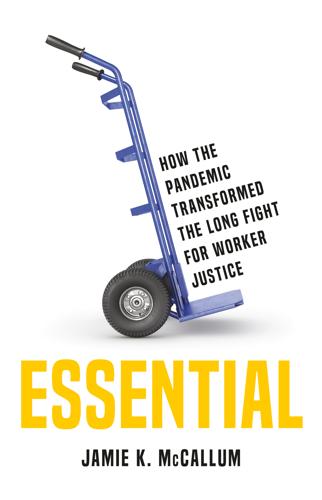
Essential: How the Pandemic Transformed the Long Fight for Worker Justice
by
Jamie K. McCallum
Published 15 Nov 2022
Joan Entmacher et al., Underpaid & Overloaded: Women in Low-Wage Jobs, National Women’s Center, 2014, https://nwlc.org/wp-content/uploads/2015/08/final_nwlc_lowwagereport2014.pdf. 37. Kate Bahn and Carmen Sanchez Cumming, Factsheet: U.S. Occupational Segregation by Race, Ethnicity, and Gender, Washington Center for Equitable Growth, July 1, 2020, www.equitablegrowth.org/factsheet-u-s-occupational-segregation-by-race-ethnicity-and-gender/. 38. Bahn and Cumming, “Factsheet: U.S. Occupational Segregation”; Emiko Usui, “Occupational Gender Segregation in an Equilibrium Search Model,” IZA Journal of Labor Economics 4, no. 1 (July 10, 2015): 13, https://doi.org/10.1186/s40172-015-0028-2. 39.
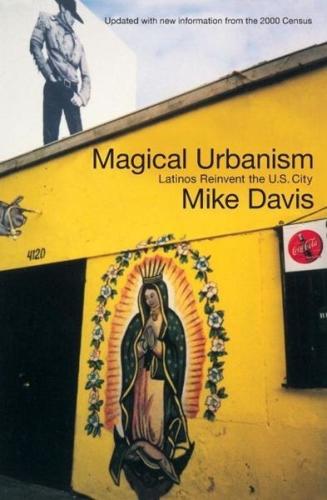
Magical Urbanism: Latinos Reinvent the US City
by
Mike Davis
Published 27 Aug 2001
racism on a scale that belies that Valley's progressive MAGICAL URBANISM 102 Table 9 The Digital Divide: Unequal Opportunity in Silicon Valley (Percentage of the Workforce) Silicon Bay Area Oracle^ Sun- white 56 61 73 71 Asian 21 28 20 22 Latino 14 7 3 4 8 4 3 3 Black * Percentages for 33 ^ VaUey* Mountain View, major high-tech firms. 11, 3 85 Source: San Francisco Chronicie, Indeed, ' Redwood Shores, some of May 4, been fined or sued the worst offenders are cyber-capital icons all of whom for racial discrimination or failure to federal diversity deadlines. of single Latino 773 employees. 1998. Apple, Sun, Adobe, Netscape and Oracle, like 11, employees. official Three of the or manager. have meet largest firms lacked even "It is pretty clear," says UC Santa Cruz's Manuel Pastor, "that there's ethnic and occupation segregation going on in Silicon Valley." Locked out of the "New Economy," it is not surprising that Latinos are also the least likely to profit individually or through group membership from the fin de siecle stock market bubble. According to a January 2000 Federal Reserve fifth ally study, the bottom of Americans, as a result of exploding household debt, actu- had fewer to real estate assets and than in 1995.^^° White median wealth, thanks Dow Jones, is Latinos: $45,700 versus $4700.)^^^ now almost ten times that of 10 THE PUERTO RICAN TRAGEDY In the worst-case scenario, many of today's Mexican, Central American and Dominican immigrants may recapitulate the bitter experience of the Puerto Rican diaspora.

Slouching Towards Utopia: An Economic History of the Twentieth Century
by
J. Bradford Delong
Published 6 Apr 2020
And because firms pay more for experienced workers—both because experienced workers are more productive and because the promise of regular pay increases along a well-established career track can serve as a powerful way to motivate employees—that relative lack of experience kept women’s relative wages low. A second factor keeping relative female earnings low was the persistence of occupational segregation by sex. Between 1900 and 1960, roughly two-thirds of the female labor force would have had to change occupations in order to produce the same distribution across occupations as the male labor force. Occupational segregation has fallen somewhat since the end of the 1960s, but it is still the case that women are concentrated in occupations that are relatively low paid. A third factor keeping women’s relative earnings low has been their inability to attain the qualifications that employers value.
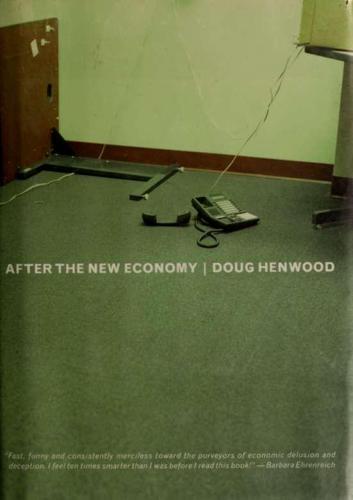
After the New Economy: The Binge . . . And the Hangover That Won't Go Away
by
Doug Henwood
Published 9 May 2005
The reasoning goes: women with family responsibilities may prefer jobs with flexible schedules;jobs with flexible schedules may pay less; therefore, lower pay is an expression of preferences! QED. Let's not ask why jobs with flexible schedules pay less, or women have a disproportionate share of family responsibiHties. It seems safe to conclude from all this that occupational segregation accounts for part of the gender gap, but not all. Teaching ofiers an interesting case study. Women account for 38% of all college and university teachers; the field's average pay is 74% above the national average.^ But below that elite level—where 87% of teachers teach—74% are women, and pay is 25% above average.

The Smartphone Society
by
Nicole Aschoff
In May 2019 the company announced that it would increase the minimum wage for contract workers in the Bay Area, New York, and Washington, DC, to $20.9 Shuttle drivers at Loop Transportation and Compass Transportation, whose buses ferry workers at Apple, Yahoo, eBay, and others, voted to unionize, and security guards at Apple and Google won recognition as full-time employees. The tide is turning. Over the past few years, over 5,000 tech service workers have voted to unionize. Many blue-collar tech workers are organizing through Silicon Valley Rising, a community-, faith-, and labor-based coalition created to fight occupational segregation and income inequality. SVR sees the struggles of tech workers as rooted in the broader dislocations and disruptions caused by tech companies’ rapid and unrestrained invasion of Santa Clara County over the past few decades. The coalition calls not only for wage gains but also affordable housing, and an inclusive tech industry; right now only one in ten permanent employees of tech companies are Black or Latino.

Care: The Highest Stage of Capitalism
by
Premilla Nadasen
Published 10 Oct 2023
Gender equity in the workplace has become equated with women occupying the highest ranks of the corporate and professional world—where they have no doubt been underrepresented. This particular battle, however, does not address the needs of the vast majority of employees and the larger issue of occupational segregation—that is, how most women who work in corporate America are relegated to low-paying, low-valued work. Tackling that would require rethinking the occupational structure and rectifying disparities in pay and benefits between those at the top and the bottom, not just equity between men and women in the top ranks.

Undoing the Demos: Neoliberalism's Stealth Revolution
by
Wendy Brown
Published 6 Feb 2015
See, for example, this argument by Becker: “The responsibility of married women for childcare and other housework has major implications for earnings and occupational differences between men and women, even aside from the effect on the labor force participation of married women. I submit that this is an important reason why the earnings of married women typically are considerably below those of married men, and why substantial occupational segregation persists.” Becker, A Treatise on the Family, p. 78. 72. Some have argued that gender stratification is reduced by neoliberalism, insofar as it involves a shift from an economy based on private property economy to an economy based on human capital. Elizabeth Mayes, for example, thinks the decreasing importance of private property is positive for women, for Engels-like reasons: if women’s subordination has been linked historically to their status as private property, women are now freed to be individuals rather than property.
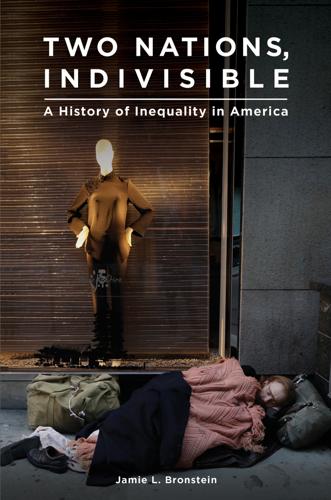
Two Nations, Indivisible: A History of Inequality in America: A History of Inequality in America
by
Jamie Bronstein
Published 29 Oct 2016
As they had been during the advent of the first textile factories in the nineteenth century, women were increasingly attractive to employers in the 1970s because firms were facing global competition, and women could be paid less than men. Some women achieved managerial positions, although they tended to be at the bottom of management hierarchies in the least-well-paid jobs. Occupational segregation, although it had eased somewhat by the end of the century, still existed in many fields, and women earned less than men at every educational level, with full-time women workers earning 59 cents on the dollar compared to men in 1974 and 79 cents on the dollar by 2014. Over the course of their careers, women tended to lose ground compared to men.97 Whereas racially discriminatory legislation had to face the legal test of “strict scrutiny” (no such law could stand without a “compelling state interest”), efforts to achieve gender equality foundered after the failure of the Equal Rights Amendment.
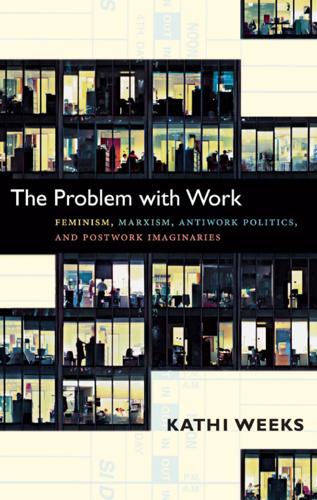
The Problem With Work: Feminism, Marxism, Antiwork Politics, and Postwork Imaginaries
by
Kathi Weeks
Published 8 Sep 2011
In the fast-food franchise that Leidner studied, cooking was understood by managers and workers alike as men’s work when it could have just as easily been coded as a feminized activity. Though it is not always easy to foresee if jobs will become gendered—or, if so, which jobs will be treated as more or less appropriate for which specific ideal of gendered comportment—the occupational segregation that is part and parcel of the gender division of labor stands nonetheless as supposed empirical proof of the necessity of gender difference and hierarchy. Thus, as Leidner notes, “the considerable flexibility of notions of proper gender enactment does not undermine the appearance of inevitability and naturalness that continues to support the division of labor by gender” (1993, 196).

T: The Story of Testosterone, the Hormone That Dominates and Divides Us
by
Carole Hooven
Published 12 Jul 2021
These gender-atypical feelings don’t just pop up in adulthood: LeVay, Gay, Straight, and the Reason Why, 43–48; Michel Anteby, Carly Knight, and András Tilcsik, “There May Be Some Truth to the ‘Gay Jobs’ Stereotype,” LSE Business Review, London School of Economics, January 18, 2016, https://blogs.lse.ac.uk/businessreview/2016/01/18/there-may-be-some-truth-to-the-gay-jobs-stereotype/; and András Tilcsik, Michel Anteby, and Carly R. Knight, “Concealable Stigma and Occupational Segregation: Toward a Theory of Gay and Lesbian Occupations,” Administrative Science Quarterly 60, no. 3 (2015): 446–81. girls who shun dresses and prefer rougher sports: J. Michael Bailey, Paul A. Vasey, Lisa M. Diamond, S. Marc Breedlove, Eric Vilain, and Marc Epprecht, “Sexual Orientation, Controversy, and Science,” Psychological Science in the Public Interest 17, no. 2 (2016): 45–101.

The Equality Machine: Harnessing Digital Technology for a Brighter, More Inclusive Future
by
Orly Lobel
Published 17 Oct 2022
The algorithm might decide, due to the proximity of vectors, to present women with a stereotypical set of choices when using a search browser—say, ads about shopping and spas—while showing men ads about jobs and tech gadgets. In turn, women will continue to have less information about professional opportunities, continuing and even deepening our reality of occupational segregation and financial disparities. Research substantiates the prevalence of these biased associations in our written and spoken language. In a study published in Science, a machine trained to read through Google News articles learned to make associations between words. Without being guided in any way, the program came to associate male and female names with different types of careers and different kinds of emotions.7 Bias creeps into algorithms in this way because bias is baked into the language of our culture—because our societies are unequal.
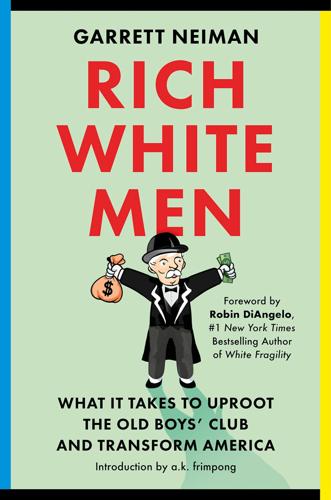
Rich White Men: What It Takes to Uproot the Old Boys' Club and Transform America
by
Garrett Neiman
Published 19 Jun 2023
Over the past fifteen years, the gender pay gap hasn’t budged: in 2020, women earned 84 percent of what men earned, according to a Pew Research Center analysis of median hourly earnings of both full- and part-time workers.5 Some of that gap is due to direct gender discrimination—different pay for the same work—but there are other factors, too. One significant issue is occupational segregation, since women remain underrepresented in positions that offer access to wealth and power. And the more wealth and power an occupation offers, the more women are typically underrepresented. For example, venture capitalists have backed America’s seven richest people.6 All seven are white male technology entrepreneurs, and their combined wealth exceeds $1 trillion.
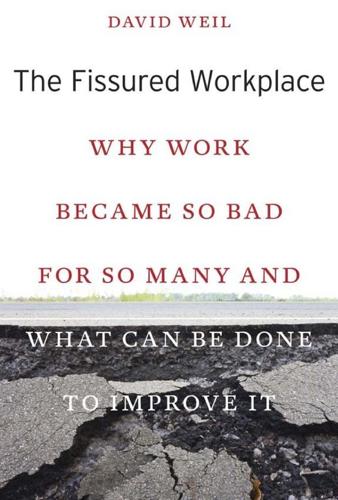
The Fissured Workplace
by
David Weil
Published 17 Feb 2014
Journal of Business Research 57, no. 2: 232–240. Glynn, Timothy. 2011. “Taking the Employer out of Employment Law? Accountability for Wage and Hour Violations in an Age of Enterprise Disaggregation.” Employee Rights and Employment Policy Journal 15, no. 1: 101–135. Goldin, Claudia. 1986. “Monitoring Costs and Occupational Segregation by Sex: A Historical Analysis.” Journal of Labor Economics 4, no. 1: 1–27. Goldin, Claudia, and Robert Margo. 1992. “The Great Compression: The Wage Structure in the United States at Mid-Century.” Quarterly Journal of Economics 107, no. 1: 1–34. Goldstein, Bruce, Marc Linder, Laurence Norton, and Catherine Ruckelshaus. 1999.

Austerity Britain: 1945-51
by
David Kynaston
Published 12 May 2008
Women might have penetrated the toolroom during the exigencies of war, but their presence was no longer acceptable; there was no question of their receiving apprenticeships and thus becoming full toolmakers, and management and the male toolmakers between them would soon ensure that women were wholly excluded from the citadel. In short, it was back to the cow-shed. Yet the fact is that in her oral history of Mullards, together with similar light-industry firms in south London, Sue Bruley has found ‘no signs that women resisted the pressures to reinforce strict occupational segregation’. Furthermore, ‘the only signs of unrest among the women in these years [1920–60] was over piece rates’, though ‘there is little evidence that dissatisfaction over pay rates spilled over into serious unrest’. Much turned, presumably, on the expectations of working women, as well as the extent to which they looked to their job as the central source of their identity.

The Rise and Fall of American Growth: The U.S. Standard of Living Since the Civil War (The Princeton Economic History of the Western World)
by
Robert J. Gordon
Published 12 Jan 2016
There was little sympathy in the middle and upper classes (among whom unemployment was rare) for the effects of income variability in working-class families. In the middle and upper classes, workers were blamed for their troubles and portrayed as “dullards or as dangerous, drunken louts.”62 WOMEN’S WORK OUTSIDE THE HOME: OCCUPATIONAL SEGREGATION, LOW WAGES, AND REPETITIVE TASKS Paid work was much less common among married women than unmarried before World War II. Unmarried women were herded into “women’s jobs,” including household servants, clerks, school teachers, and medical nurses. Women worked also in manufacturing, primarily in textiles and apparel; the majority of these working women were young, childless, and/or widows.63 Just as the mechanization of the steel industry eliminated the personal satisfaction of skilled workers and forced employees into a homogenous and highly regimented work force, so the invention of the sewing machine created the archetypal sweatshop, in which rows and rows of women sat in front of their machines producing clothing to the drumbeat of their supervisors demands for an ever faster pace of work.